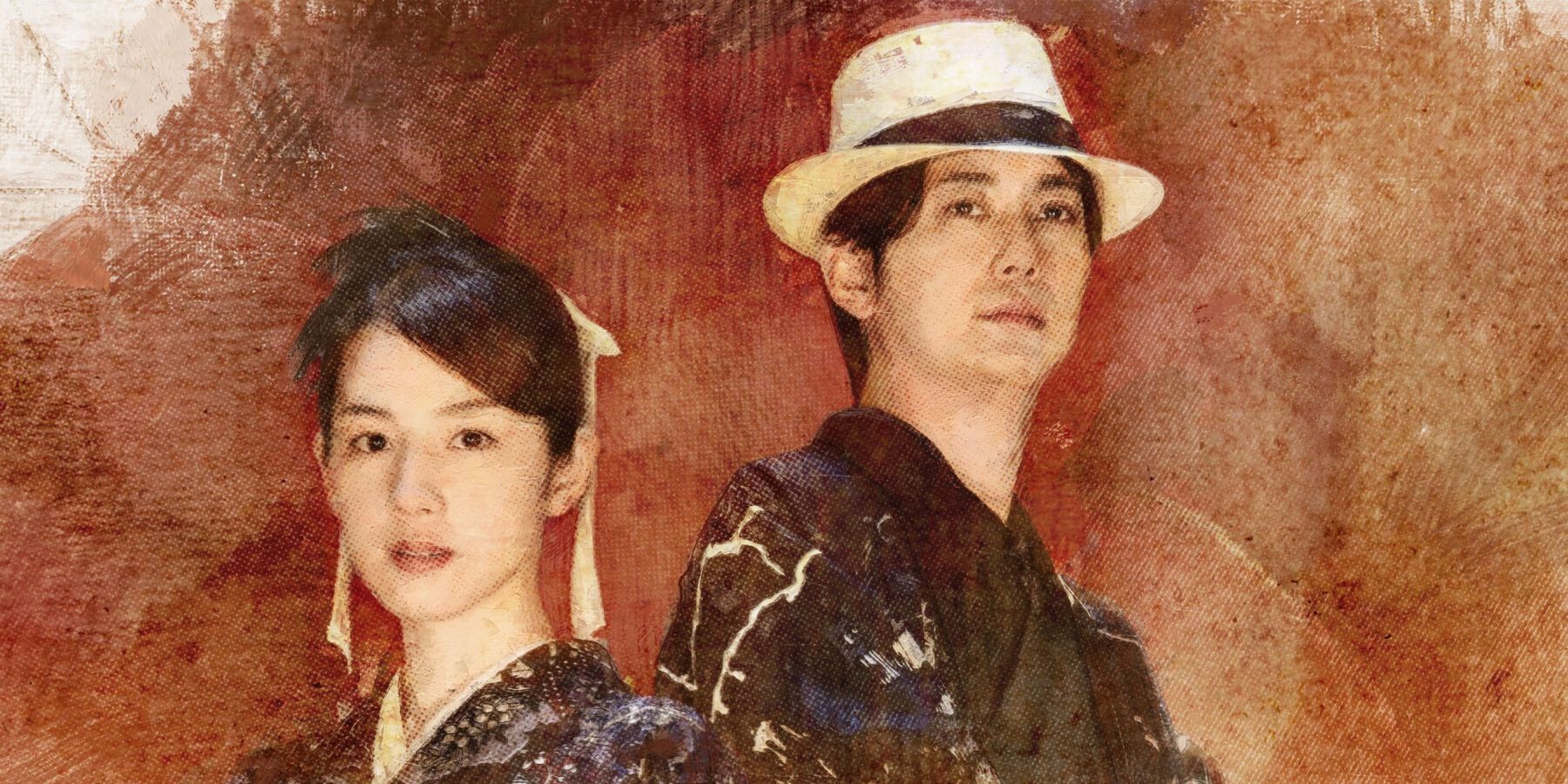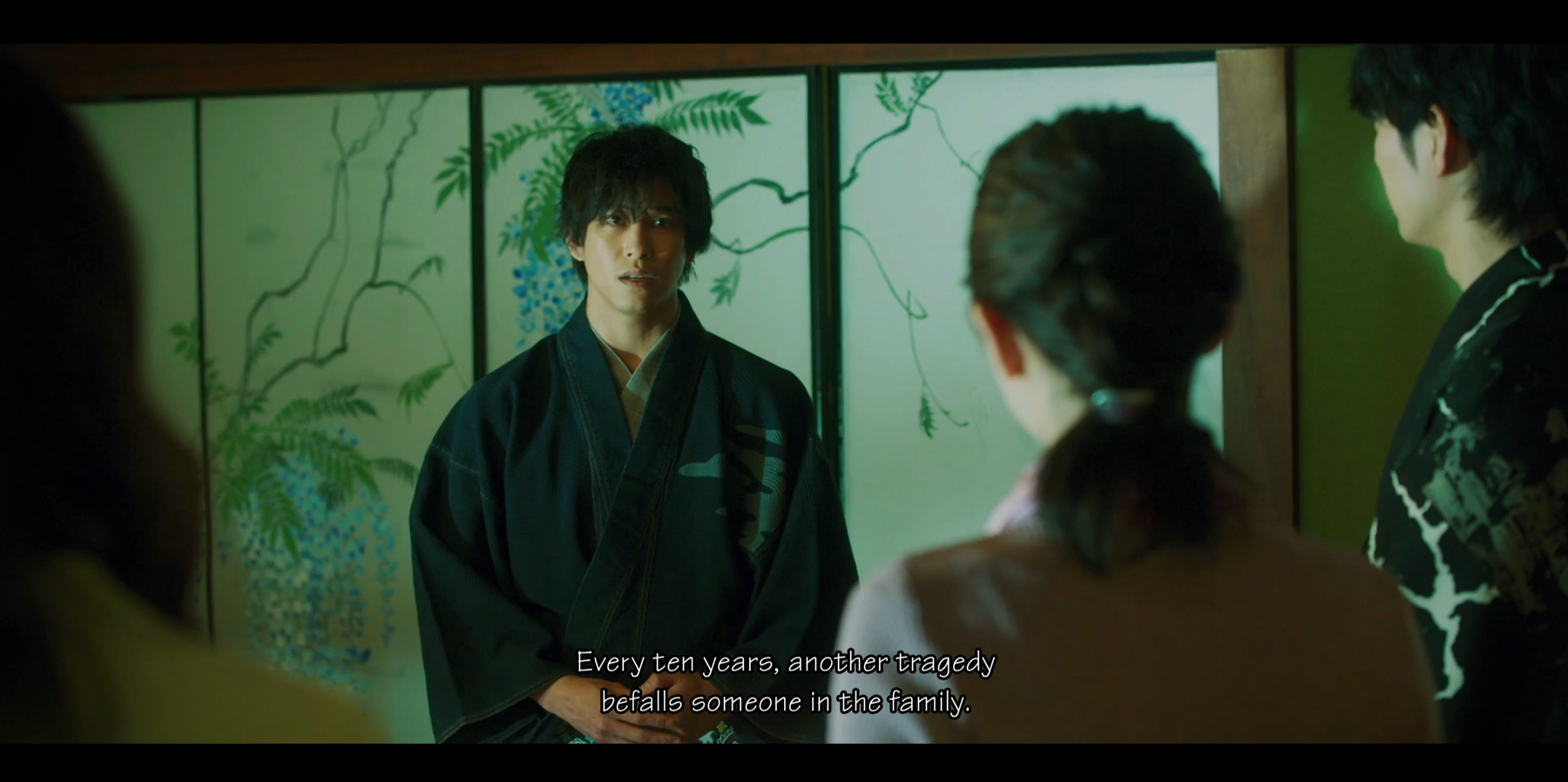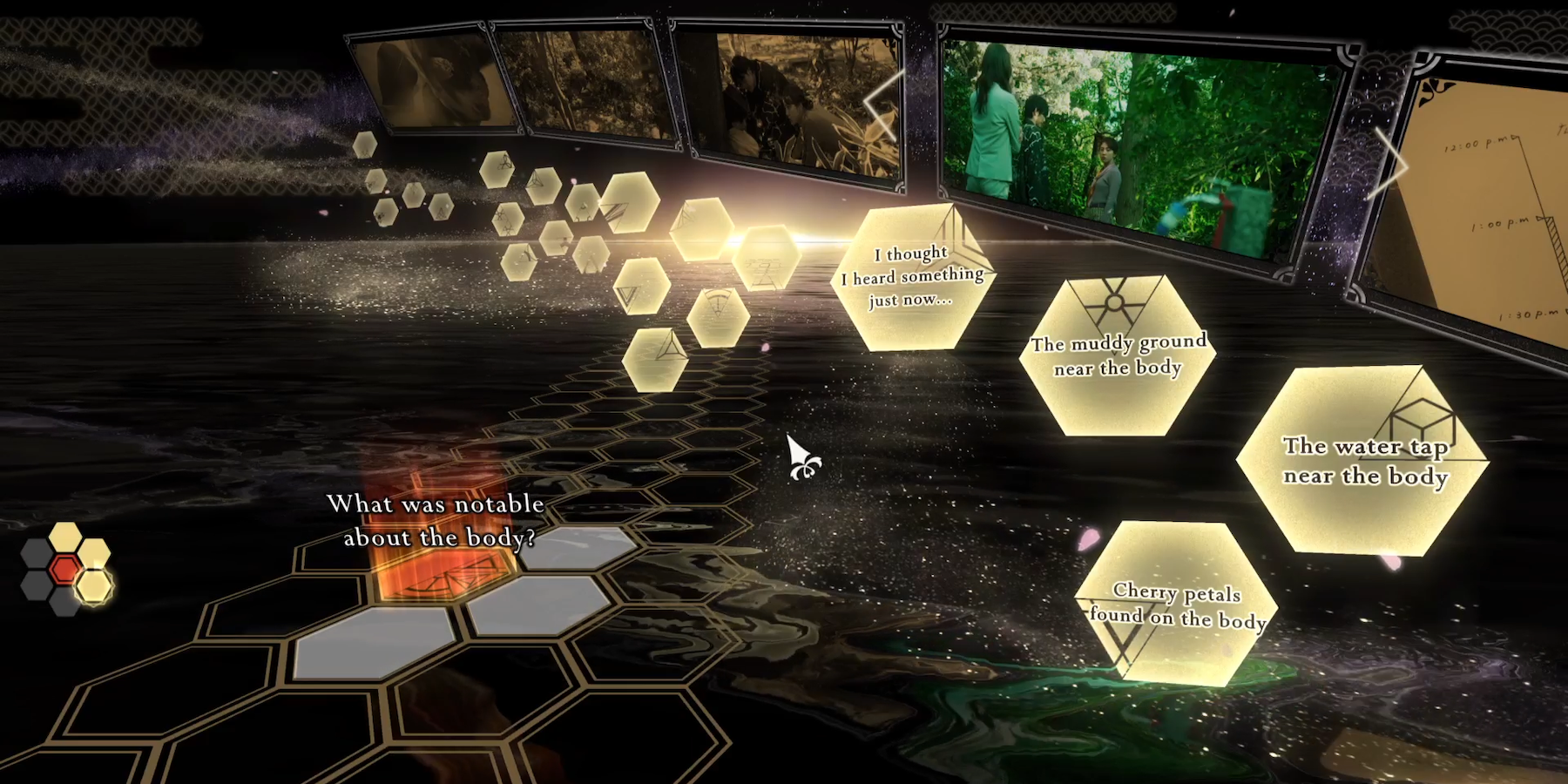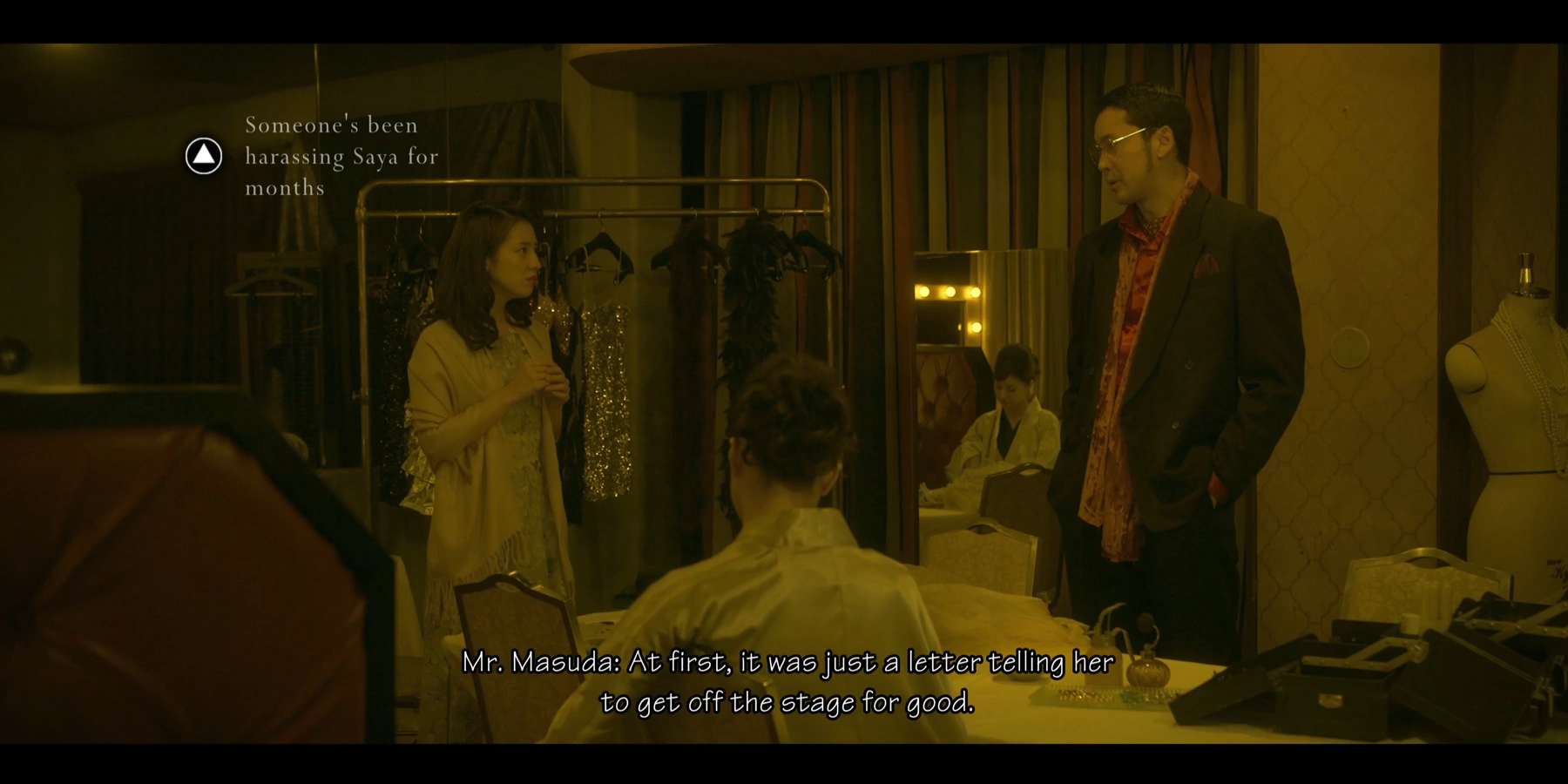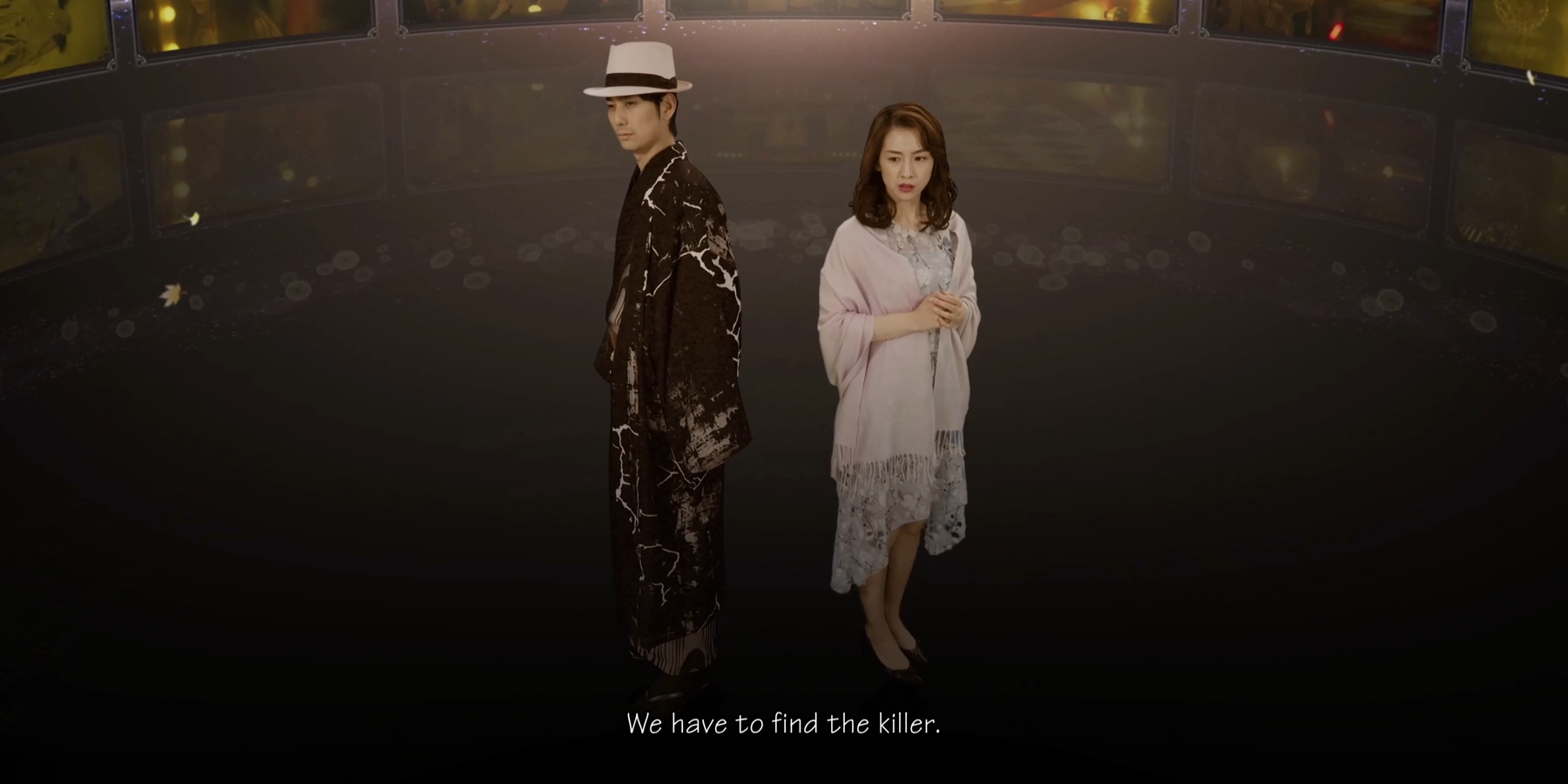The Centennial Case: A Shijima Story is a murder mystery FMV (full-motion video) about a century-old family that eats magic fruit to stay alive forever. If that sounds like a lot, it is. The Centennial Case is a love child made by Koichiro Ito of Metal Gear Solid 5 fame and Junichi Ehara (Babylon's Fall). Players take control of novelist-turned-amateur-P.I. Haruka Kagami, who has one goal: solving the string of mysterious murders surrounding the Shijima family over the past century.
Where The Centennial Case succeeds is its story. This is far from the most revolutionary plotline, but it is sufficient at holding the player's attention. There's a healthy balance of drama and intrigue that encourages the player to continue. Individual beats are presented well, and the characters are interesting enough for players to form attachments. The twists are surprising at times and even the main antagonist can be viewed sympathetically. That's all to say that the story is well-written.
Unfortunately, The Centennial Case is held back by its medium. FMV is a tricky genre because it straddles the line between game and movie. With so much focus put on the video side, The Centennial Case would make an excellent limited series, but as a game, it fails.
There's no variation between culprits and victims and choices presented during the Incident Phase—a fancy term for the hours of film that play between gameplay segments—don't matter. Characters respond to either option the same way or decide to do the opposite of the player's choice. The game invalidates certain clues and hypotheses because of the ground rules it sets in the menus (and later violates those same rules).
To combat the inherent linearity, the game throws no less than 400 red herrings at the player. In the Reasoning Phase, the player pieces together clues to form hypotheses. The clues are hand-fed to the player during the Incident Phase, and any missed clues (we couldn't tell when or if we missed a clue) are included despite being overlooked. Many of the clues lead to hypotheses designed to throw the player off course. There is only one true sequence of events; the rest are always diversions.
The mysteries and their associated clues are easy to piece together. Each clue, shaped like a hexagon, contains a small design on one of the six sides. That design matches one of the mysteries, which is presented the same way. If players don't want to exert the minimal effort it takes to put the round peg in the hexagon hole, so to speak, they can use Insights to highlight clues that belong to a specific mystery. Once a clue is matched to its mystery, the player receives a hypothesis about part of the case.
The trouble starts when the player must create a summary of an unexplained mystery. This is a slog. Players select one of several mysteries and then many explanations about that mystery to form the summary. The game then provides feedback from Haruka's sidekick to indicate whether this summary is important. If players create an unimportant summary, they have to go through the whole process again. Rather than letting the player come to the conclusion on their own, the game holds their hand and leads them right to it.
In doing that, the game realizes it needs to provide the player with some kind of challenge. That's where the Solution Phase comes in. Players need to select the correct hypotheses and point out important details seen in the Incident Phase to determine the killer and their motive. Unfortunately, the game drops the ball here.
The details crucial to figuring out the case are usually not included as clues during the Reasoning Phase. If players miss these details or choose a dialogue option that doesn't present them, they have to rewatch scenes to find them, sometimes repeatedly. But because they weren't presented as clues, the player doesn't know whether they're crucial to solving the case or where to find them. Some characters will actually omit details that are needed to solve the case and don't reveal them until the dust settles.
Worse is that obvious clues leading to a correct hypothesis are often ignored. In one scenario, a suspect came from upstairs after three characters were attacked downstairs. Looking at the map, players can determine that there's no way that character could've made it back upstairs without being spotted. But this is never presented as a potential alibi, even though another character's presence in a specific location during the crime is.
In another scenario, the player is given three choices to determine why a character behaved a specific way in a scene the player saw earlier. The correct choice is intentionally worded to not reflect what the protagonist says when it's selected. Right after that, another clue used to confirm that a suspect is the killer uses wording that suggests the exact opposite of what the player saw.
The game pulls out these tricks constantly. One scenario was so convoluted that the game couldn't keep its story straight. Two of the four hypotheses presented for one accusation were the same and lead to the same conclusion, but only one of them was "correct" in the game's eyes. Characters claimed that the victim shouldn't have known a specific fact, but no one ever said that in the Incident Phase. Eventually, the game pulled the rug out by revealing information a character purposefully withheld for no reason. This information was crucial to solving the case, but there was no way to discover it until the end.
These issues are a direct result of the chosen medium. Had this been a TV show or movie, omitting facts or misleading the protagonist wouldn't have mattered. Eventually, they would have come to the conclusion even if the audience didn't. But because players can't progress until they figure out the solution, they have to rely on absurd leaps in logic to make accusations using misleading or incomplete information. The game doesn't pull punches if players mess up. They're forced to sit through unskippable game over scenes that purposefully embarrass the protagonist, complete with corny music, patronizing corrections, and condescending rebuttals.
While The Centennial Case has an interesting story to tell—and it's quite an enjoyable story at that—it's better told in a different medium. As a game, it struggles to balance the narrative with gameplay. Because it hands players the solutions, it then has to butcher reasonable logic or outright lie to prevent them from stampeding through each case. Had it just been a TV show, the red herrings could've been used as diversions that the protagonist cleverly dispels to find the truth. Instead, The Centennial Case feels like a TV show providing pop quizzes with only wrong answers.
The Centennial Case: A Shijima Story is available on May 12, 2022, on PC, PS5, PS4, and Switch. Game Rant was provided a PS5 code for this review.

